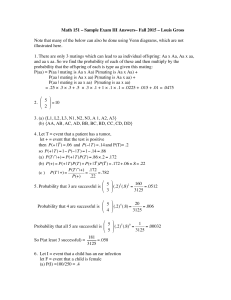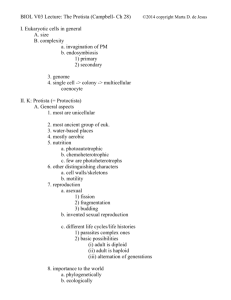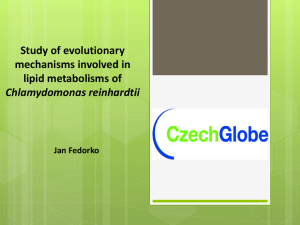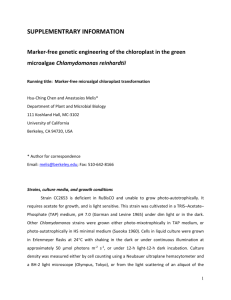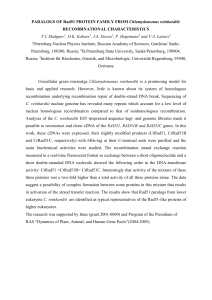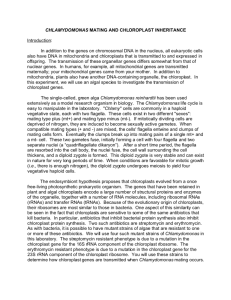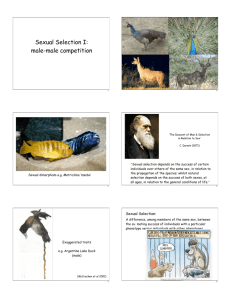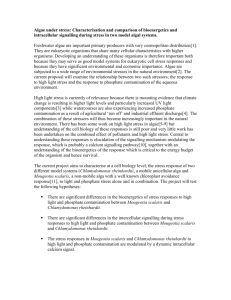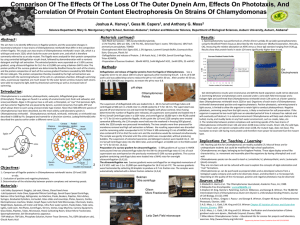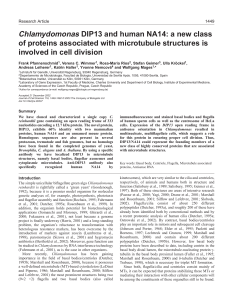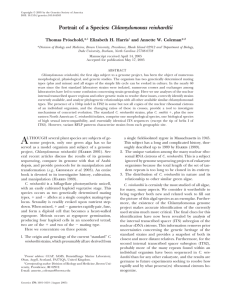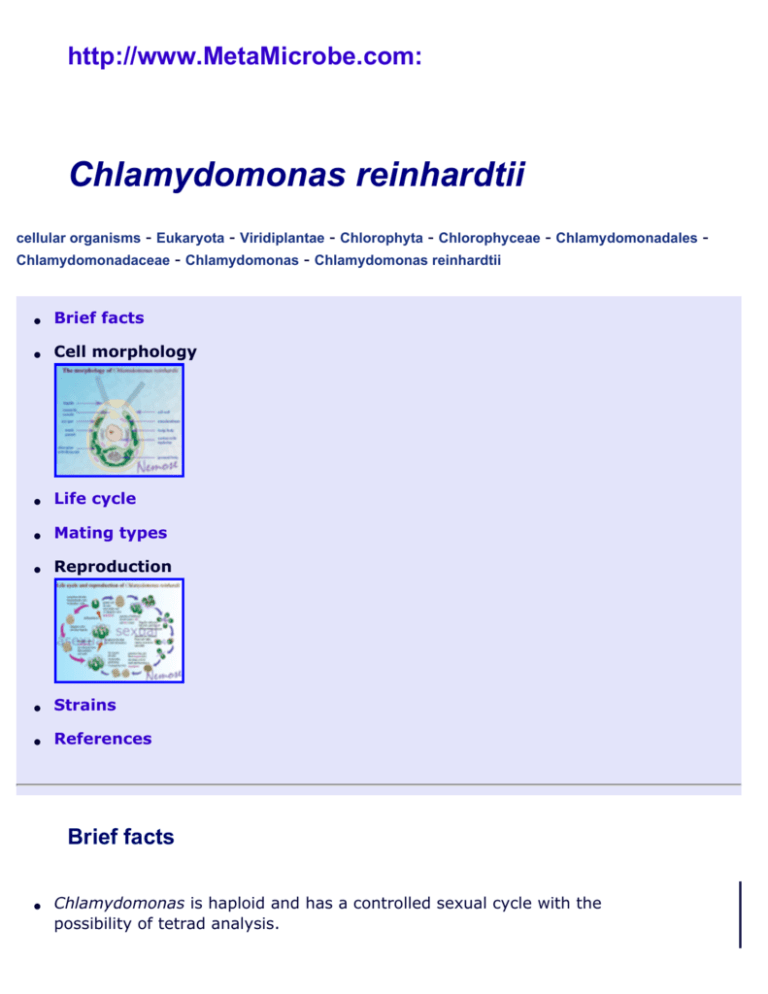
http://www.MetaMicrobe.com:
Chlamydomonas reinhardtii
- Eukaryota - Viridiplantae - Chlorophyta - Chlorophyceae - Chlamydomonadales Chlamydomonadaceae - Chlamydomonas - Chlamydomonas reinhardtii
cellular organisms
●
Brief facts
●
Cell morphology
●
Life cycle
●
Mating types
●
Reproduction
●
Strains
●
References
Brief facts
●
Chlamydomonas is haploid and has a controlled sexual cycle with the
possibility of tetrad analysis.
Its photosynthetic apparatus is closely related to that of vascular plants,
and it is also a eukaryote, with photosynthesis genes encoded by both the
nuclear and chloroplast genomes.
●
Chlamydomonas ability to grow heterotrophically allows the isolation of
viable mutants that are unable to perform photosynthesis.
●
Chlamydomonas is the only known eukaryote in which the nuclear,
chloroplast and mitochondrial genomes can all be transformed.
●
Life cycle
Generation time takes approximately 5 hours.
●
vegetative cell
haploid cells reproduce asexually by fission: the
protoplast dividing to form 4-8 zoospores similar to the
parent
●
gametogenesis MeSH
under conditions of nitrogen starvation vegetative cells
develop into gametes of two mating types: mt+ and
mt-
●
adhesion
gametes of opposite mating types are attracted to each
other and form aggregates
●
gamete activation
release of cell walls; formation of mating structures
●
fusion
fusion of mt+ fertilization tubule with mt- mating
structure
●
zygote MeSH
complete cell fusion; zygote is not flagellated and
serves as a dormant form of the species in the soil
●
meiosis MeSH
zygote undergoes meiosis to form 4 haploid zoospores
Mating type (gender)
Mating can take place only between individuals of opposite mating types due to the interaction
of cell surface components. The equivalent in lower organisms of the sexes in higher
organisms; the mating types typically differ only physiologically and not in physical form.
●
mt+
activation of cells of mating type mt+ results in
production of a long membrane-enclosed fetilization
tubule covered with a glycoprotein, and containing
polymerized actin filaments
●
mtcells of mating type mt- move membrane proteins to
the specific region of thr plasma membrane and
produce a short-lived tubule with no microfilaments
Strains
●
137C
wild type; ancestral to many mutants; mt+; originates
from an isolate made near Amherst, Massachusetts, in
1945
●
C9
mt-
●
CC-125
wild type; mt+
●
CC-1690
wild type; mt+
●
CC-1691
mt-
●
CC-2290
also called S1D2; mt-
References
PubMed articles
●
●
●
Grossman AR et al. Chlamydomonas reinhardtii at the crossroads of genomics.
Eukaryot Cell. 2003 Dec;2(6):1137-50. PMID: 14665449
Stauber EJ, Hipper M. Chlamydomonas reinhardtii proteomics. Plant Physiol Biochem.
2004 Dec;42(12):989-1001. Epub 2005 Jan 18. PMID: 15707836
PubMed free full-text articles: major topic "Chlamydomonas"
Websites
●
Chlamidomonas Center
Last updated 09/13/09
nemose@live.com
©Nemose 2008-2009 All rights reserved


